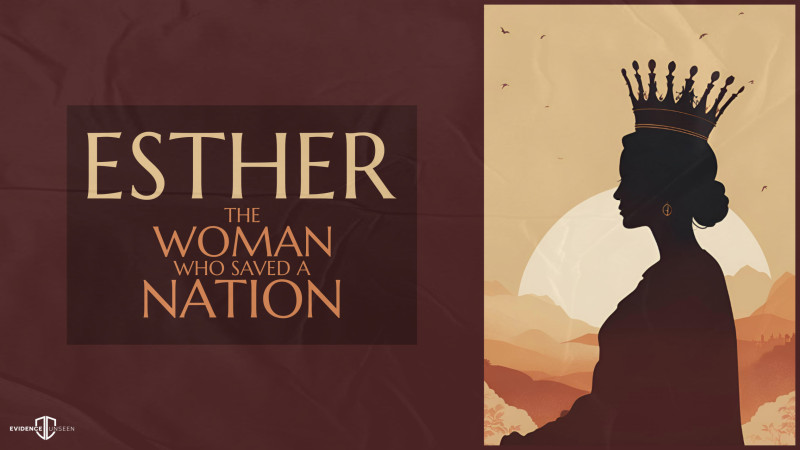Huey, F. B., Jr. Esther. In F. E. Gaebelein (Ed.), The Expositor’s Bible Commentary: 1 & 2 Kings, 1 & 2 Chronicles, Ezra, Nehemiah, Esther, Job (Vol. 4). Grand Rapids, MI: Zondervan Publishing House. 1988. 776.



Esther answers the question of what happened to the Jews who didn’t return from the exile (with Ezra and Nehemiah). It shows God’s sovereign protection over the evil enemies who try to destroy God’s people.
It is difficult to know who wrote the book of Esther. The author must’ve had access to the chronicles of Xerxes in the royal palace (Esther 10:2). This means it would need to be Esther, Mordecai, or someone close to them:
Esther? This is certainly possible. However, Huey writes, “No one has seriously argued that Esther herself was the author.” We aren’t exactly sure why this isn’t seriously considered.
Mordecai? Josephus and Clement of Alexandria believed that Mordecai was the author. Commentators argue that Mordecai cannot be the author because of Esther 10:3 (“For Mordecai the Jew was second only to King Ahasuerus, and great among the Jews and in favor with his many kinsmen”).
Men of the Great Synagogue? The Baba Bathra (15a) holds that “the men of the Great Synagogue” wrote Esther. Jobes writes that these men were “believed to be anonymous teachers who lived in the period between the last prophets and the later rabbinical scholars.”
Anonymous authorship? Because the author never identifies him or herself, most commentators remain agnostic in regards to Esther’s authorship. Archer holds to anonymous authorship, as does Huey, Jobes, as well as Hill and Walton. We agree that it isn’t possible to know who wrote this book. R. Laird Harris writes, “We do not know the author of Esther, Chronicles, or Job, but they are found among the Prophets, and there is no reason to object to claiming their authors also as prophets.”
The events in the book take place during the reign of Xerxes (486-465 BC), and the internal evidence of the book favors this general dating. The Hebrew of the book is unlike late Palestinian writing, and it is most similar to the Hebrew found in “Ezekiel, Ezra-Nehemiah, and other compositions of the sixth and fifth centuries.” While the book contains many Persian terms, we should expect this because it takes place in Persia! By contrast, the book contains no Greek words, which implies an early date—not a late one.
It’s odd, but Esther never mentions God’s name. Later authors solved this problem by adding and interpolating many references to God, prayer, and angels, but these additions are apocryphal and not in the original book (see Non-canonical Additions to Esther). There are a number of observations that can be made regarding this difficulty:
First, Esther isn’t the only book to omit the term “God.” Song of Songs also does not use the term God, though it does use the name “Yahweh” in 8:6. So this isn’t strictly analogous. Moreover, Song of Songs is also criticized for its canonicity, so this doesn’t help answer the question very much.
Second, the author may have omitted God’s name for stylistic reasons. The Jews in Persia were not inheriting the covenant God made with his people. The Jews who returned with Ezra and Nehemiah inherited the covenant, but the Jews of the Persian exile “were no longer in the Theocratic line, so to speak, the Name of the covenant God is not associated with them.” Because the Jews were in Persia—not the Promised Land—the author could be showing that God appears to be absent to them—even though he is still sovereign in all nations (Esther 4:14).
Third, the author may have omitted God’s name because this document was written for the Persian records. The mention of Persian annals and documents resounds throughout the book, and the author may have intended this book to enter into their records.
Fourth, God’s name might exist in a hidden acronym in the book. Geisler and Nix write,
Others have thought the omission of God’s name to be an intentional one, to protect the book from pagan plagiarization and the substitution of the name of a heathen god.
In support of that contention is the observation of W. G. Scroggie, who indicates that the name of Jehovah (YHWH) may be seen four times in acrostic form in the book, in such a way and in such places that would place it beyond the realm of mere probability. In any event, the absence of God’s name is more than compensated for by the presence of His power and grace in the deliverance of His people, a fact which gives canonical worth to the book (cf. Esther 4:14; 9:20-22).
Other scholars reject this explanation.
First, the apocryphal additions to Esther could explain why its canonicity wasn’t widely accepted. Since the Septuagint included apocryphal additions to Esther (see “Non-Canonical Additions to Esther”), this could’ve thrown the book into disrepute. Harris writes,
The best explanation is that since in the Septuagint, Esther begins with apocryphal additions, Melito, probably reading only the first verses of each book, could not recognize it among the books which the Jews told him were canonical—Jewish books were named by their first words.
Athanasius gives the clue to the difficulty about Esther which was mentioned above. He says, ‘Esther is noncanonical and begins with Mordecai’s dream.’ He refers, thus, to the Apocryphal addition with which Esther begins in the Septuagint copies. But, he continues, ‘Esther is canonical among the Hebrews; and as Ruth is reckoned as one book with Judges, so Esther with some other book.’ Perhaps Athanasius is wrong about details, but he probably gives the reason for Esther’s curious omission from a few of these lists. We may add the testimony of Basil the Great of Cappadocia, who speaks of the twenty-two Old Testament books, and the great Chrysostom, who declares himself for the Hebrew canon.
Beckwith believes that Esther was accepted in the Western Christian church from the beginning. But because of Melito’s rejection, this could’ve resulted in “mixed reception for it in Eastern Christendom.”
Second, Josephus includes Esther in his canonical list. Beckwith writes, “Josephus’s attestation of Esther is direct. He tells us that the 22 canonical books trace the course of history from the Creation to the time of Artaxerxes the successor of Xerxes, whom he identifies with the Ahasuerus who married Esther.” Josephus also refers to the events in Esther as a work of God: “God hath made that day a day of salvation, instead of a day of destruction to them” (The Antiquities of the Jews, 11.282, cf. 11.247, 259, 268, 280).
Third, Aquila (~AD 135) includes Esther in his canonical list. According to Jerome (Commentary on Isaiah, on 8:11ff), Aquila was a Jewish proselyte and a pupil of Rabbi Akiba. Epiphanius claims that Aquila made a literal translation of the Hebrew Scriptures around AD 128 (De Mensuris et Ponderibus, 113-16). In the surviving fragments, there is “no hint of it including any apocryphal book” and it “included all five of the disputed books.” He cites Esther in Greek which is found in a midrash of Esther (Rabbah 2.7). Beckwith claims that Aquila’s “rabbinical credentials are unimpeachable.”
Fourth, the Mishnah includes Esther as canonical. Beckwith writes, “It is quoted in the Mishnah and the other tannaitic literature, in the latter case with standard formulas for citing Scripture, in the former case only to mark the extent of the reading of Esther at Purim (M. Megillah 2.3). However, there is no doubt that the Mishnah also regards Esther as Scripture, since it includes a whole tractate (Megillah) on the duty of reading the book at Purim. By contrast, the similar minor festival of the Rededication of the Temple has no tractate devoted to it, and there was no duty to read any of the books of Maccabees at it.”
Fifth, the rabbis at Jamnia (~AD 90) includes Esther as canonical. While the rabbis at Jamnia originally disputed Esther, they eventually held that it was, in fact, inspired (see “The Council of Jamnia”).
Sixth, multiple early Christian theologians considered the book to be canonical. Clement of Rome cites the book as early AD 95 (1 Clement 55). Clement of Alexandria cites Esther by AD 250 (Pedagogue 3.12.5; Stromata 1.21). Hippolytus includes the book in the canon by AD 231, when he wrote his Commentary on the Psalms 1-25. Beckwith comments, “Clearly Esther was used from the earliest times at Rome, and if in the capital city, then probably elsewhere in the western world.”
God’s Sovereignty. This book demonstrates the sovereignty of God, as he works through horrible circumstances.
Anti-Semitism. Ever since God chose the Jewish people, Satan has worked to oppose and persecute them—just as he did with Jesus and Christian believers. The Abrahamic covenant, however, is still in effect (Gen. 12:1-3). God will curse anyone who hates the Jewish people.
Irony. Haman goes in to ask the king how to kill Mordecai, and the king asks Haman how he should honor Mordecai instead. Haman seeks to kill the Jews, but he ends up begging for his life from Esther—a Jewish woman. At the beginning of the account, it’s dangerous to be a Jew—by the end, it’s dangerous to not be a Jew!
Purim. This annual festival of the Jewish people originates from this book (Esther 3:7; 9:26). Jewish people still read Esther every year at the Feast of Purim (“lots”).
The Persian king Xerxes reigned from 486-465 BC. He was the grandson of Cyrus (550-530 BC) and the son of Darius I (520-486 BC). Xerxes referred to himself as “the great King, the King of Kings, the King of the lands occupied by many races, the King of this great world.” His vizier Artabanus assassinated himself and installed Artaxerxes on the throne after him.
This entire account takes place after Daniel 1:1, when Nebuchadnezzar looted and pillaged Jerusalem. Mordecai—as well as the rest of the Jews in Persia—were in Exile during this time (Esther 2:5-6).
Huey, F. B., Jr. Esther. In F. E. Gaebelein (Ed.), The Expositor’s Bible Commentary: 1 & 2 Kings, 1 & 2 Chronicles, Ezra, Nehemiah, Esther, Job (Vol. 4). Grand Rapids, MI: Zondervan Publishing House. 1988. 776.
Jobes, Karen. The NIV Application Commentary: Esther. Grand Rapids, MI: Zondervan Pub. House, 1999. 29.
Huey, F. B., Jr. Esther. In F. E. Gaebelein (Ed.), The Expositor’s Bible Commentary: 1 & 2 Kings, 1 & 2 Chronicles, Ezra, Nehemiah, Esther, Job (Vol. 4). Grand Rapids, MI: Zondervan Publishing House. 1988. 776.
Jobes, Karen. The NIV Application Commentary: Esther. Grand Rapids, MI: Zondervan Pub. House, 1999. 29.
Archer, Gleason. A survey of Old Testament introduction (3rd. ed. Chicago: Moody Press. 464.
Huey, F. B., Jr. Esther. In F. E. Gaebelein (Ed.), The Expositor’s Bible Commentary: 1 & 2 Kings, 1 & 2 Chronicles, Ezra, Nehemiah, Esther, Job (Vol. 4). Grand Rapids, MI: Zondervan Publishing House. 1988. 776.
Jobes, Karen. The NIV Application Commentary: Esther. Grand Rapids, MI: Zondervan Pub. House, 1999. 28.
Hill, Andrew, & Walton, John. A Survey of Old Testament Introduction (2nd Ed.). Grand Rapids, MI. Zondervan. 2000. 282.
Harris, R. Laird. Inspiration and Canonicity of the Scriptures. Greenville, SC, 1995. 169.
Merrill, Eugene H., Mark F. Rooker, and Michael A. Grisanti, The World and the Word: An Introduction to the Old Testament (Nashville, TN: B&H Academic, 2011), 358.
Merrill, Eugene H., Mark F. Rooker, and Michael A. Grisanti, The World and the Word: An Introduction to the Old Testament (Nashville, TN: B&H Academic, 2011), 358.
Geisler, Norman & Nix, William. A General Introduction to the Bible: Revised and Expanded. Chicago, IL. Moody Press. 1986. 260.
Geisler, Norman & Nix, William. A General Introduction to the Bible: Revised and Expanded. Chicago, IL. Moody Press. 1986. 260.
Geisler, Norman & Nix, William. A General Introduction to the Bible: Revised and Expanded. Chicago, IL. Moody Press. 1986. 260.
Huey writes, “Some scribes claimed to find the divine name YHWH (“The Lord”) in acrostics based on the initial and final letters of successive words in 1:20; 5:4, 13; and 7:7. The four letters YHWH are written larger than others in some MSS to reveal the “hidden name” (cf. Browne, p. 381; Moore, Esther, p. 56; Paton, Esther, p. 8). However no one today takes these rabbinic devices seriously.” Huey, F. B., Jr. Esther. In F. E. Gaebelein (Ed.), The Expositor’s Bible Commentary: 1 & 2 Kings, 1 & 2 Chronicles, Ezra, Nehemiah, Esther, Job (Vol. 4). Grand Rapids, MI: Zondervan Publishing House. 1988. 784-785.
Harris, R. Laird. Inspiration and Canonicity of the Scriptures. Greenville, SC, 1995. 184.
Harris, R. Laird. Inspiration and Canonicity of the Scriptures. Greenville, SC, 1995. 184.
Roger T. Beckwith, The Old Testament Canon of the New Testament Church and Its Background in Early Judaism (Grand Rapids, MI: Wipf & Stock Publishers, 1986), 322-223.
Roger T. Beckwith, The Old Testament Canon of the New Testament Church and Its Background in Early Judaism (Grand Rapids, MI: Wipf & Stock Publishers, 1986), 322.
Roger T. Beckwith, The Old Testament Canon of the New Testament Church and Its Background in Early Judaism (Grand Rapids, MI: Wipf & Stock Publishers, 1986), 277.
Roger T. Beckwith, The Old Testament Canon of the New Testament Church and Its Background in Early Judaism (Grand Rapids, MI: Wipf & Stock Publishers, 1986), 277.
Roger T. Beckwith, The Old Testament Canon of the New Testament Church and Its Background in Early Judaism (Grand Rapids, MI: Wipf & Stock Publishers, 1986), 277.
Roger T. Beckwith, The Old Testament Canon of the New Testament Church and Its Background in Early Judaism (Grand Rapids, MI: Wipf & Stock Publishers, 1986), 322-223.
Roger T. Beckwith, The Old Testament Canon of the New Testament Church and Its Background in Early Judaism (Grand Rapids, MI: Wipf & Stock Publishers, 1986), 296.
Roger T. Beckwith, The Old Testament Canon of the New Testament Church and Its Background in Early Judaism (Grand Rapids, MI: Wipf & Stock Publishers, 1986), 296.
Hill, Andrew, & Walton, John. A Survey of Old Testament Introduction (2nd Ed.). Grand Rapids, MI. Zondervan. 2000. 285.
Huey, F. B., Jr. (1988). Esther. In F. E. Gaebelein (Ed.), The Expositor’s Bible Commentary: 1 & 2 Kings, 1 & 2 Chronicles, Ezra, Nehemiah, Esther, Job (Vol. 4, p. 797). Grand Rapids, MI: Zondervan Publishing House.

James earned a Master’s degree in Theological Studies from Trinity Evangelical Divinity School, graduating magna cum laude. He is the founder of Evidence Unseen and the author of several books. James enjoys serving as a pastor at Dwell Community Church in Columbus, Ohio, where he lives with his wife and their two sons.
